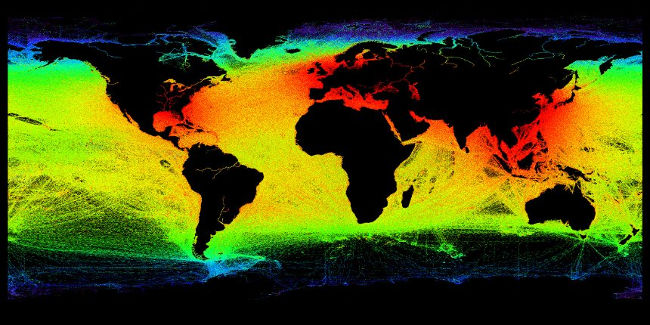Satellite creates a detailed picture of maritime operations
The European Space Agency (ESA) has helped coastal authorities track more than 70% of ships and receive more detailed ship positions three times via satellites than ever before.
Large cargo ships and passenger ships must carry Automatic Identification System. It transfers route, speed, as well as positioning and location information to other ships and seaside stations. Developed to prevent collisions, the system now also tracks vessels to help prevent contamination, helping in the transport of dangerous goods and promoting regular maritime monitoring.
 Satellite creates a detailed picture of maritime operations Picture 1
Satellite creates a detailed picture of maritime operations Picture 1
The Norwegian Coast Authority is using information to manage the nation's coast and waters for safety, emergency and sea transport planning.
The advanced receivers developed by Kongsberg Seatex in Norway with the support of the European Space Agency ESA, were integrated on two NorSat satellites last year. During the first four months of operation, the receiver significantly improved detection of identification signals.
The satellites help increase visibility for important positioning information from a height of 74km above sea level to 2500km from low orbit, meaning more ships can be seen at the same time.
In areas with heavy maritime traffic, the number of signals sent by the ships may be too high, causing the signal to be stuck in the satellite receiver. The solution is that the new signals are easily collected by satellites and have less interference from other train signals.
Ivar Spydevold, CEO Statsat added: "The total number of signals from NorSat receivers usually reaches 2.5 million signals a day. This is nearly three times the number of previous receivers on AISSat- 1 and 2, with a total of about 900,000 signals a day " .
See more:
- The ocean is losing "breath"
- Coral reefs are severely bleached without the impact of El Nino
- Unmanned aircraft help scientists monitor endangered sea turtles
You should read it
- How to check the balance of Maritime Bank account
- This AI system can better control ship collision at sea than humans
- ESA's new weather satellite sends back images of Earth with impressive detail
- The horrific 'ghost submarine' disaster during World War I, the biggest maritime secret in history
- How clean are astronauts keeping the space station?
- The 7 largest objects people ever launched into space
- What is Agency?
- How to choose the correct shipping container?
- China successfully launched the first 6G satellite into space
- 7 interesting facts about NASA authority
- Spyware 'made in Vietnam'
- Admire the magical beauty of the Rho Ophiuchi star system through the eyes of the James Webb . telescope
May be interested

Sea water prevents the release of ancient methane

Scientists are about to teach mosquitoes without human blood

Pentagon wall made from ancient bacteria than dinosaurs

'Giant atoms' swallow other atoms to create a new state of matter

Exotic ice diamonds have never been seen in nature

Life on Earth can be derived from cyanide






 Picture in Picture on iPhone: How to activate and use Picture in Picture (PIP)
Picture in Picture on iPhone: How to activate and use Picture in Picture (PIP) Manage servers and databases with detailed utilities in SQL Operations Studio (preview)
Manage servers and databases with detailed utilities in SQL Operations Studio (preview) NASA satellite views of Chernobyl Exclusion Zone wildfires paint a worrisome picture
NASA satellite views of Chernobyl Exclusion Zone wildfires paint a worrisome picture How to check the balance of Maritime Bank account
How to check the balance of Maritime Bank account This is the most detailed map of the seafloor ever made.
This is the most detailed map of the seafloor ever made. How to turn on Picture in Picture on Edge is extremely simple
How to turn on Picture in Picture on Edge is extremely simple